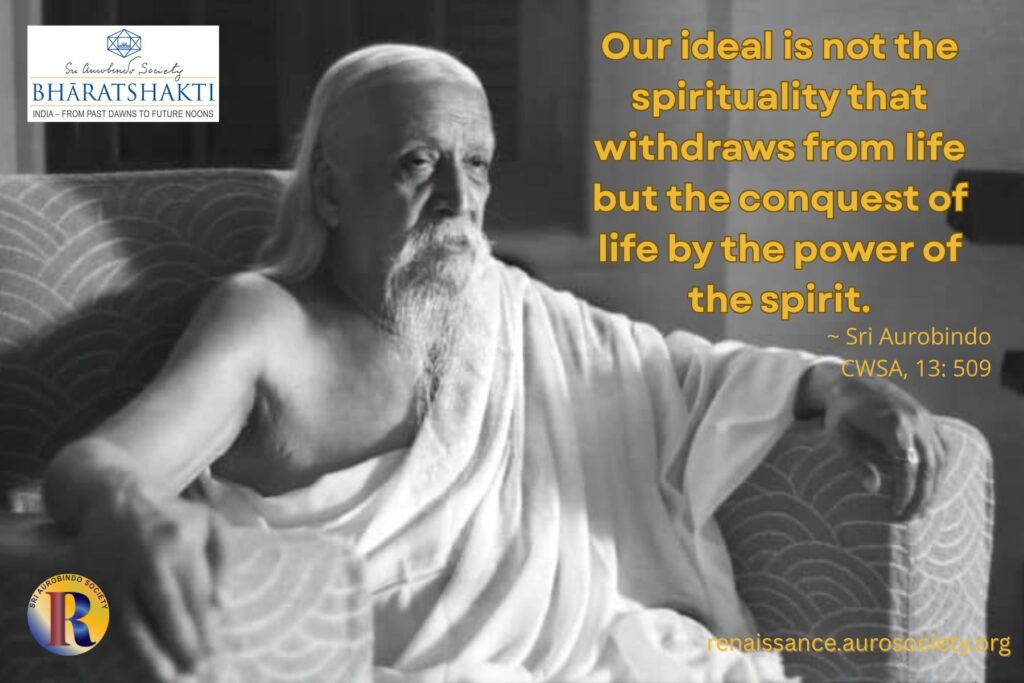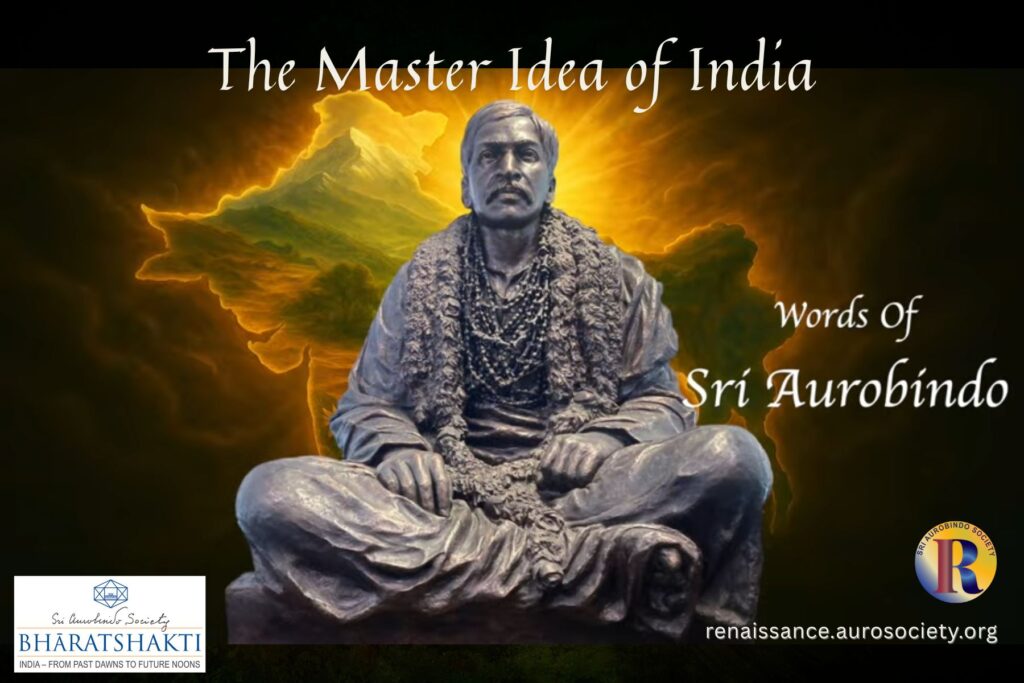Volume III, Issue 2
Author: Beloo Mehra
Greetings for this very special day, February 21, 2022, the 144th birthday of our Sweet Mother.
On 15th August 2021, we started a year-long celebration of Sri Aurobindo’s 150th birth anniversary by dedicating 12 issues of Renaissance to explore the 12 attributes which the Mother has identified as soul-powers necessary for the full manifestation of Her Work. We have explored six attributes so far:
Sincerity | Humility | Gratitude | Perseverance | Aspiration | Receptivity
The present issue is dedicated to exploring ‘Progress’.
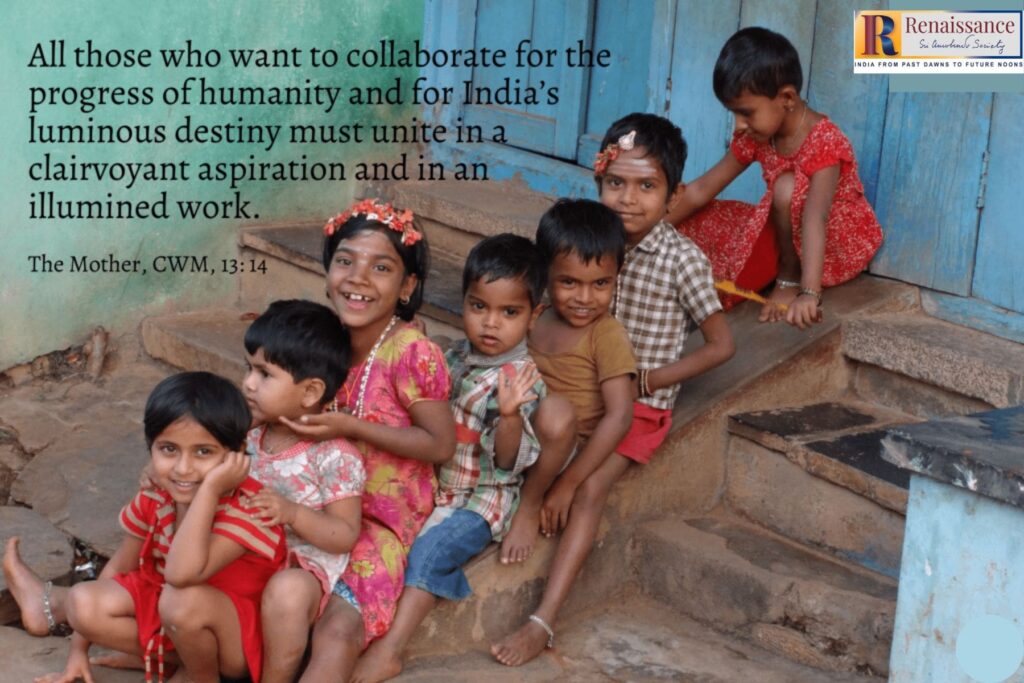
Digital Exhibit:
An Offering for the Birthday of Our Sweet Mother
This year is also being celebrated throughout our country as ‘Azaadi ka Amrit Mahotsav’, to mark 75 years of India’s political independence. For India to rise to her true potential and fulfil her true destiny, she must find and manifest her soul. And as the Mother reminds, the one and the only way to find back India’s soul is if we ourselves become conscious of our psychic being.
The twelve attributes represent the soul-qualities we must progressively cultivate within as we aspire for a deeper, wider and higher consciousness. This is the progress we, the children of Mother India, must constantly strive for, if we aspire to be true servitors of the Truth and sincere children of the Divine Mother.
We have another birthday this month; February 28, Auroville’s Foundation Day. This city of dawn is the Divine’s Dream, a living experiment in Human Unity. Inspired by all these special events, we explore the attribute of ‘Progress’ in this special issue.
Let us begin with the question — how do I begin? The all-compassionate Mother gives us a clear guidance.
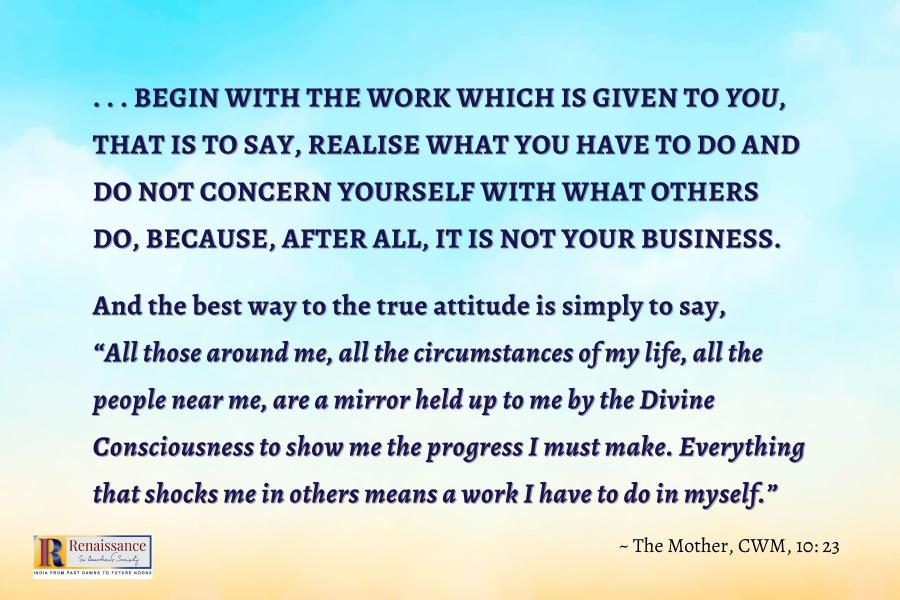
What is Progress?
Like many other words these days, the word ‘Progress’ too has often been narrowly or even wrongly used, misused or misunderstood. While it is true that essentially everything is progressing toward its hitherto-unknown but its inevitable destiny, this progress is not generally in a straight line. It is full of pauses, detours and also phases of what may appear as movement in the reverse direction. But that is the way of Life and Nature.
A certain turn of intellect with its eye glued only toward the future considers progress as the only truth, and also has its own definition and ideas of what progress looks like. Another turn of the intellect is mesmerised by all that was glorious in the past and wants to conserve and preserve all of that, even when recognising that change is inevitable. Often reflected as a conflict between tradition and modernity, at its core this is about how past, present and future are not seen as integral and inseparable parts of a single movement of progress.
Digital Exhibit:
Sri Aurobindo on the Ideal of Progress for Humanity
Life, Mind and Progress
Sri Aurobindo once said that Western civilisation while being proud of its successful modernism fails to recognise that “there is much that it has lost in the eagerness of its gains and much which men of old strove towards that it has not even attempted to accomplish.” (CWSA, Vol. 20, p. 81). This is true not only of Western civilisation anymore. In the East, in India, and wherever else we find strong impact of the ‘modernism’ of the Western variety, we see similar story being played out.
Certainly, modernism, especially the modern science, has brought many valuable gains, but much has also been lost. In the name of modernity, societies are getting oppressed by what Sri Aurobindo refers to as “unashamed mass of ugliness and vulgarity, . . . unchastened external utilitarianism, . . . vitalistic riot and the morbid exaggeration and unsoundness of many of its growths,” resulting from an “uneliminated survival of the triumphant barbarian” (CWSA, Vol. 20, p. 82).
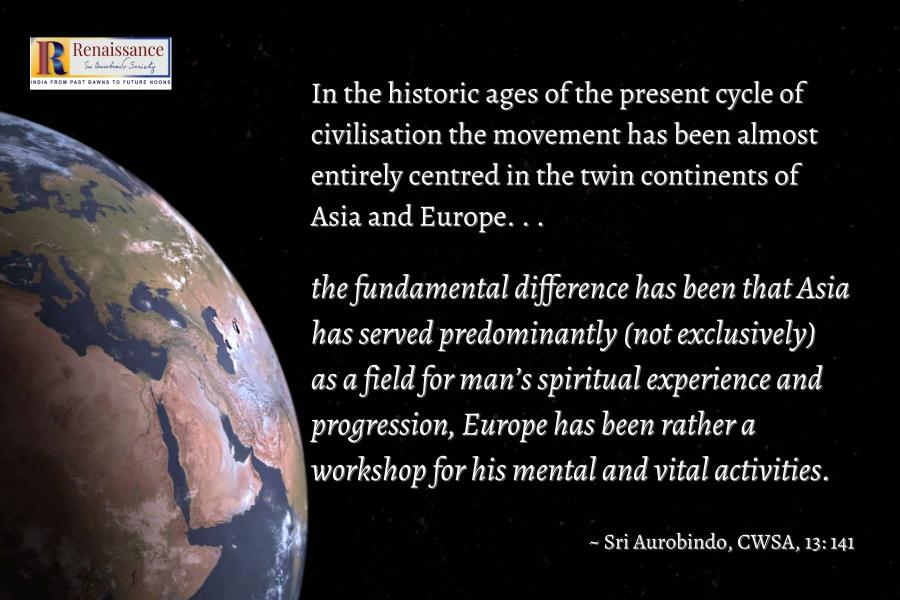
This is because the Western variety of modernism – driven primarily by the advent of modern science and the age of rational individualism – is entirely a child of the Mind, at the service of exaggerating and embellishing Life. The nature of progress unleashed by this has very little real connection with inner dimensions of Life – that real throbbing, pulsating, vibrant field for multi-faceted human progress.
But this is a concern not only for the civilisational or collective progress. It equally concerns the individual aspiring for a higher and truer life.
How to approach and live our individual lives as means to the progress and perfection we seek, without getting caught up in the web of ‘external utilitarianism’ or ‘a vitalistic riot’? What is that right attitude and right spirit with which to make our life a means to an integral growth?
Two Possibilities
Two possibilities arise: the method of exaggeration of Life, and the method of upraising the Life.
The Spirit is a higher infinite of verities; life is a lower infinite of possibilities which seek to grow and find their own truth and fulfilment in the light of these verities. Our intellect, our will, our ethical and our aesthetic being are the reflectors and the mediators.
The method of the West is to exaggerate life and to call down as much—or as little—as may be of the higher powers to stimulate and embellish life.
But the method of India is on the contrary to discover the spirit within and the higher hidden intensities of the superior powers and to dominate life in one way or another so as to make it responsive to and expressive of the spirit and in that way increase the power of life. Its tendency with the intellect, will, ethical, aesthetic and emotional being is to sound indeed their normal mental possibilities, but also to upraise them towards the greater light and power of their own highest intuitions.
(Sri Aurobindo, CWSA, Vol. 20, pp. 15-16)
Let me add that the ‘West’ here is not really a geographical marker but rather a descriptor of a particular outlook on life, existence, reality, knowledge and truth. In other words, ‘the method of the West’ is more about a rational-materialistic approach to Life, which views Spirit as something outside, something separate from Life. Whereas ‘the method of India’ is about a more integral approach where Spirit is not removed from Life and Matter, just hidden, and hence Life becomes a means to unveil that hidden spirit.
The first method, by exaggerating the Life As Is and by only embellishing it here and there with the powers of the Spirit, offers one path to progress. But it is predominantly an outer progress only, and may eventually dig us deeper into an inner cage, golden and gem-studded though it may be.
This cage with its captivating aesthetic appeal, high intellectual ideas, and enthralling advancement in our material life is still that, a cage. Even the embellishments we occasionally add from the house of the Spirit are mostly add-ons, done primarily for the purpose of making Mind – intellect, emotion, aesthetics, ethics – more effective means for fulfilling the ever-increasing and incessant demands and desires of Life. The cage created in this process may engage, amuse and entertain us for a while, a long while even.
Deep Inside We Know…
But somewhere deep inside we know there is more to Life. There is a yearning for life outside the cage, life that liberates or at least has the potential to liberate.
That is when we turn to the method of upraising the Life. And there is only one way for it – by turning inside. It doesn’t involve rejecting anything that Life offers. Nor does it reject anything concerned with the Mind – intellect, emotion, aesthetics, or ethics. It works by journeying the inner path to discover the hidden spirit behind them all, by raising everything to their highest possible meaning and purpose, by dominating the Life through the hidden powers of the Spirit.
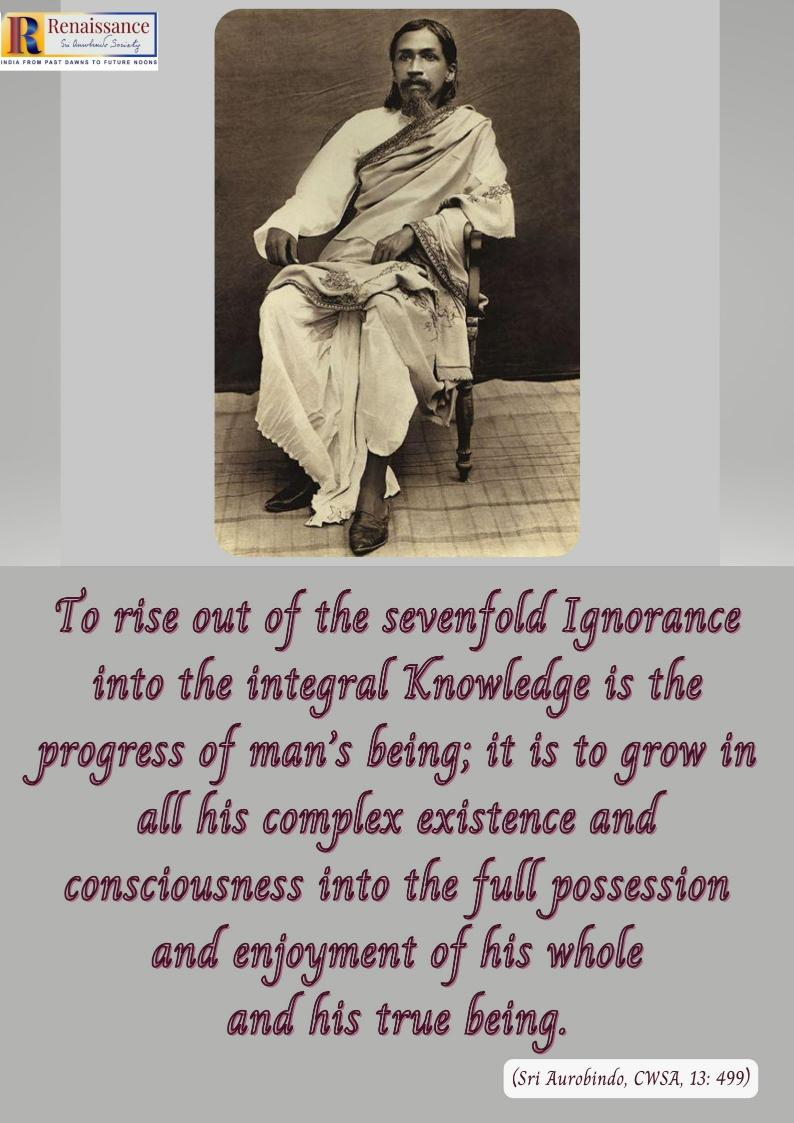
The destination of this journey lies within us, and so are its pathways and the detours. The key which can open up this pathway is hidden behind the mix of things that cloud up our vision. We need to clear our way of seeing first.
A Journey Within
The mix of all the good and the bad, the ups and the downs, the contentment and the confusion, the tranquillity and the turmoil that Life presents on our individual life-paths must become the grist for the mill, so to speak. It must become the means and the way to our inner progress.
Only when the Light of the Spirit shines upon the dark, hidden, sleepy and sluggish corners of our minds, we begin to see and recognise the real meaning and purpose behind all that life offers us. With each little effort made to wake up in the Light, with each little step taken to step out and walk in that Light we begin to upraise the life, to uplift every little or big experience, every victory or failure, every up or down, every gain or loss, every good or bad.
When we begin to see, recognize, accept and work through each of these experiences with lesser and lesser inner excitement (in either direction – up or down), and with more and more inner calmness and equanimity, we can be sure that we are making progress.
Digital Exhibit: The Mother on Progress
This progress is qualitatively different from the one made when we only exaggerate Life, the progress unleashed by the Western variety of modernism. This progress is transformative in nature, because it opens up an entirely new way of looking at, and more importantly, of living Life.
It places Mind not in conflict with Life, but facilitates a harmony between the two. Essentially both Mind and Life, in their true essence, not only express but are also moved by the Spirit. It helps both rise consciously to their fuller and greater possibilities via all that they experience. It helps them realize that in such development and upraising rests their true and real purpose.
This is progress aimed to gain a real mastery over Life – an inner self-mastery, a true control over how to experience Life.
We explore this and a few other aspects of Progress through our offerings in this issue. The aspect of collective progress is also not ignored.
21 Offerings for this Special Issue
Twenty-one felt like the most appropriate number for our offerings in the present issue. In the Guiding Light section we highlight a few passages from the Mother which emphasise that the earth is a field for progress. She reminds that while one inevitably makes progress with the rhythm of Nature, with sādhanā this progress can become conscious and swift. We receive some practical guidance from Sri Aurobindo about inner nearness to the Mother and a constant opening to her Force as two keys to making progress in sādhanā.
Another feature explores the relation of psychic being and soul, and the progressive quality of the psychic being. This month’s selection for Sādhanā feature reminds us of the great patience of the Supreme Mother with her children who fumble and fall thousand times on their path of progress.
See Our Digital Exhibit:
The Mother, an Educationist of the Future
Like Progress, another related word which most people generally understand in a narrow or limited manner and often in a superficial way is Perfection. In the Spiritual Philosophy section, we feature a few selections which help us remove our intellectual cobwebs and gain a deeper dimension to these ideas of Progress and Perfection.
In the article Ancient Hindu Cyclical Theory of Evolution, Sri Aurobindo drawing upon insights from Hindu scriptures explains that the Hindu mind has never admitted the principle of linear progress. An Ideal for the Future Progress of Humanity brings us a summary of two different lines of movements of progress that have been predominant in the West and East, and the necessity of an ideal which integrates the two for the future progress of humanity. Read all about how past, present and future are integral and inseparable parts of a single movement of progress in Conservation and Progress.
You may also like:
Open Your Soul to Her
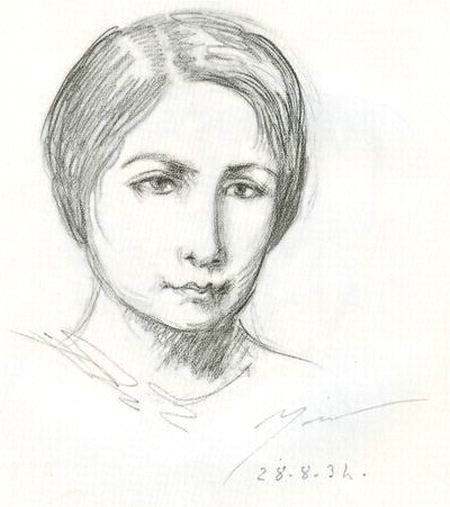
“The One whom we adore as the Mother is the divine Conscious Force that dominates all existence, one and yet so many-sided that to follow her movement is impossible even for the quickest mind and for the freest and most vast intelligence.”
~ Sri Aurobindo, CWSA, Vol. 32, p. 14
We celebrate the Mother’s birthday by highlighting The Mother, an Educationist of the Future which also included a precise explanation by K. R. Srinivasa Iyengar of Free Progress approach to education. Sri Aurobindo once wrote to a disciple that “those who want to progress quickly, welcome even the blows of Mahakali because that pushes them more rapidly on the way” (CWSA, Vol. 32, p. 353). With Progress as our theme for this issue, a feature on the Mahakali Aspect of the Divine Mother seems most befitting.
The Mahkali aspect continues to inspire as we remember the Mother as a master storyteller by featuring the story titled Building and Destroying, which also fits in nicely with our theme of Progress.
The Mahakali aspect is also our guide for two more features. In the Insightful Conversation we speak with Saiswaroopa Iyer about her journey as a writer of engaging with women from our Purāna-s and Itihāsa-s, especially the warrior queens. For the Book of the Month, we feature a reading of Iyer’s novel titled ‘Abhaya’ in the light of Sri Aurobindo.
And there’s more. . .
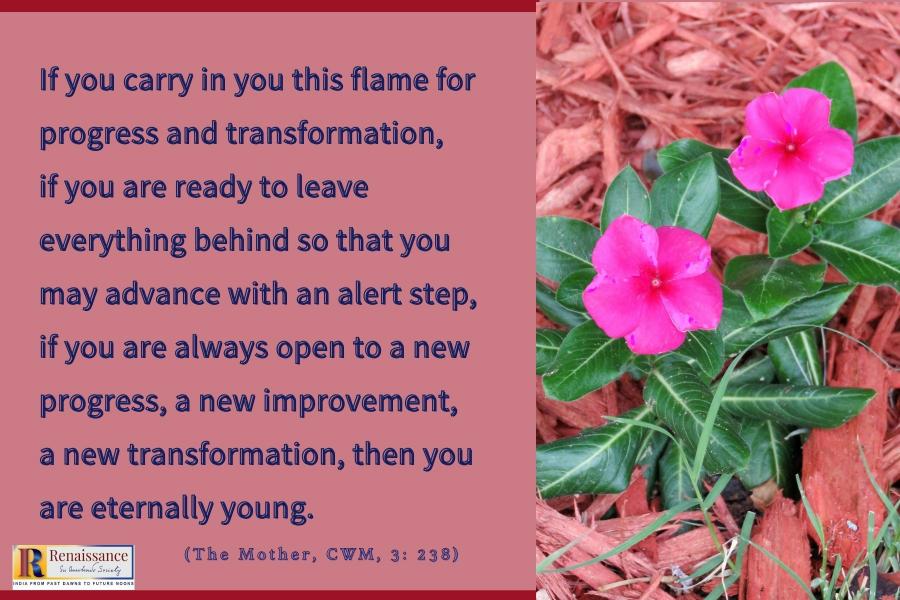
Are you bored? Most people have said yes to this question from time to time. We bring a conversation of the Mother with the children in which she explains that the only reason we ever feel bored is because we fail to make use of every moment as an opportunity to learn something new. Shraddha Gour Mohanti in a piece written primarily for young adults titled Progress simplified for the yearning minds reiterates in a simple manner what essentially is progress.
In our Flower-meditation series, Sheeba Naaz reminds us about the cancer-busting chemical produced by the humble periwinkle, the flower which was given the spiritual significance ‘Progress’ by the Mother. In the सर्वे सन्तु निरामयाः series, read about Ćaturmāsya Sankalpam and its connection to physical and spiritual well-being. Part III and Part IV of the ongoing Sacrifice and Egoism essay from Sri Aurobindo Circle archives complete the issue.
A Closing Thought
As I close the editorial, I recall that the Mother has cautioned us about two of the greatest obstacles in our path to progress. It is important that we remember this as we walk the path.
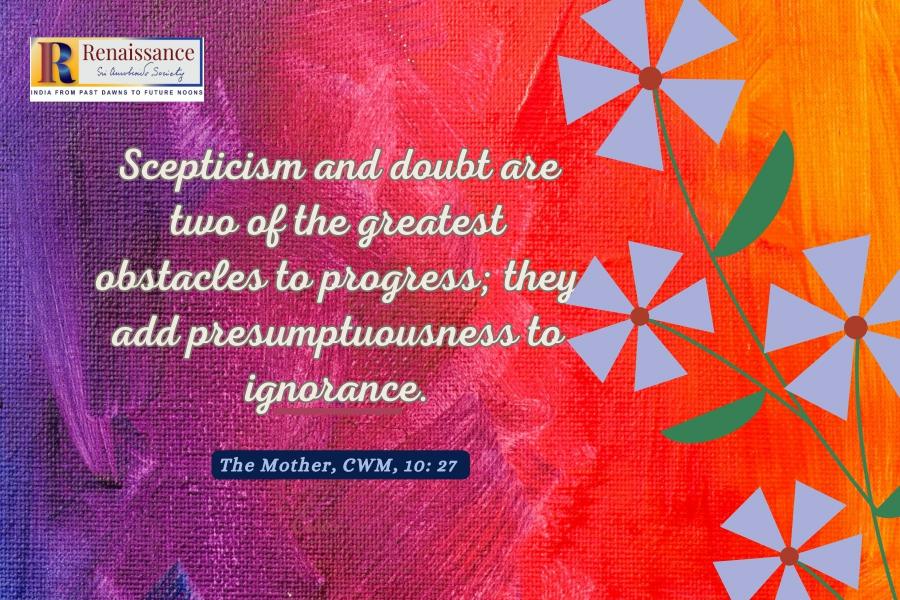
We hope that our readers will find value and inspiration in this issue’s offerings. As always, this work is offered at the lotus feet of Sri Aurobindo and the Mother.
In gratitude,
Beloo Mehra (for Renaissance Editorial Team)

Another offering on the Mother’s birthday we recommend:
~ Design: Beloo Mehra

